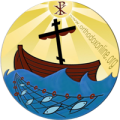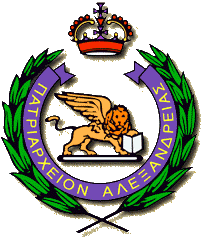
The Patriarchate of Alexandria had been a small church since the separation of the “non-Chalcedonians”, that is, when the majority of Egyptian Christians in the fifth century rejected the Council of Chalcedon (the Fourth Ecumenical Council). The number of Orthodox in Egypt in 1965 AD was about 10,000 (the majority of whom were Arabs of Lebanese or Syrian origin), and the number of believers currently does not exceed 500,000, distributed throughout Africa. The head of the Church of Alexandria officially bears the title of “Pope and Patriarch.” Orthodox custom does not limit the title of Pope to Bishop of Rome.
The Patriarch and the majority of the clergy are Greek. The entire African continent belongs to the Patriarch, and since the Orthodox have begun missionary activity in Central Africa, it is possible that the Church of Alexandria will experience a new, unexpected expansion in the near future. (On missionary work in Africa, see Chapter Nine)
In the seventh century, the number of Orthodox churches reached seventy during the time of Saint John the Merciful.
Today, the number of Orthodox churches in Alexandria and Cairo is 18, and the number of patriarchal monasteries in Egypt is 3. There are churches in Damietta, Port Said, Tanta, Mansoura, Ethiopia, Kenya, Uganda, South Africa, Nigeria, Libya, Tunisia, Sudan, Tanzania, Zimbabwe, and Congo. , Rwanda, Burundi, Cameroon...
The number of members of the Holy Synod is 18 bishops, and there are also 4 independent bishops, 2 assistant bishops, and 6 retired bishops (1).
Pope Theodorus II
Born in 1954 in Crete, Nikolaos Choreftakis is a graduate of Rizarios Ecclesiastical in Athens and holds a degree from the Faculty of Theology of the Aristotelian University of Thessaloniki. He also studied the history of art, literature and philosophy in Odessa (a city in Ukraine). From 1975-1985, His Beatitude became Archdeacon in Crete. In 1997, he was appointed Patriarchal Vicar of Alexandria. On October 9, 2004, he was elected unanimously by the Church Council after the martyrdom of Peter VII in a helicopter accident. A ceremony took place on October 24, 2004 in Bechara Gabriel Cathedral in Alexandria. (Translated by Orthodox Wiki.) His Eminence is considered one of the most active bishops, as he personally supervises some missionary missions to Africa.
Church of Uganda and Kenya
The Orthodox Church in Uganda and Kenya was not formed as a result of the activity of missionaries, but rather a spontaneous movement carried out by the Africans themselves. The two movers towards Orthodoxy in Africa are from the country's homeland and they are called Ruben Spenga Mukasa Spartas (he was ordained a bishop) and Udbaya Kabanda Basagaketalo. The two founders grew up in the Anglican Church, and converted to Orthodoxy in the twenties, not as a result of contacts they had with the Orthodox, but rather as a result of their personal research, reading, and study. Since the early 1940s, Robin and Obadiah have been promising other Africans the vitality of the new faith they have found. They organized a community numbering, according to some reports, 100,000 believers, especially in Kenya, and in 1965 there were three African bishops.
This church is affiliated with the Patriarchate of Alexandria, which has been in charge of its affairs since 1946.
The ties with Alexandria were strengthened in the 1950s, and since 1959 a Greek metropolitan affiliated with the Patriarchate has assumed responsibility for missionary work in Central Africa. Students from the country were sent to Greece to study theology. Since 1960, more than eighty deacons and priests have been ordained. Until then the two founders were the only priests. Missionary activity extended from Uganda to Kenya. Many African Orthodox have high hopes and want to “cast their nets” more widely. As Bishop Spartas says: “It seems to me that within a short period of time, this Church will include all Africans and will become one of the most important churches in Africa.” The launch of Orthodoxy in Uganda should be studied taking African nationalism into account: one of the most important factors of attraction in Orthodox Christianity is, without a doubt, its being independent in its entirety from every colonial regime. But Orthodoxy in Central Africa, despite these political considerations, is a real religious movement.
The enthusiasm shown by Africans towards embracing Orthodoxy shook the imagination of the Orthodox world and awakened in many a new interest in evangelization. Likewise, the “missionary” situation in which Orthodoxy lives in the diaspora has made the Orthodox more aware of the meaning of their own tradition: Would not greater commitment in the field of Christianizing non-Christian countries lead to the same result?

